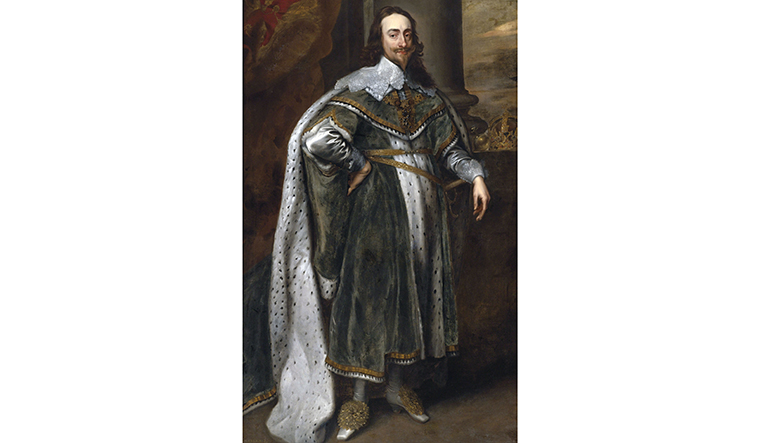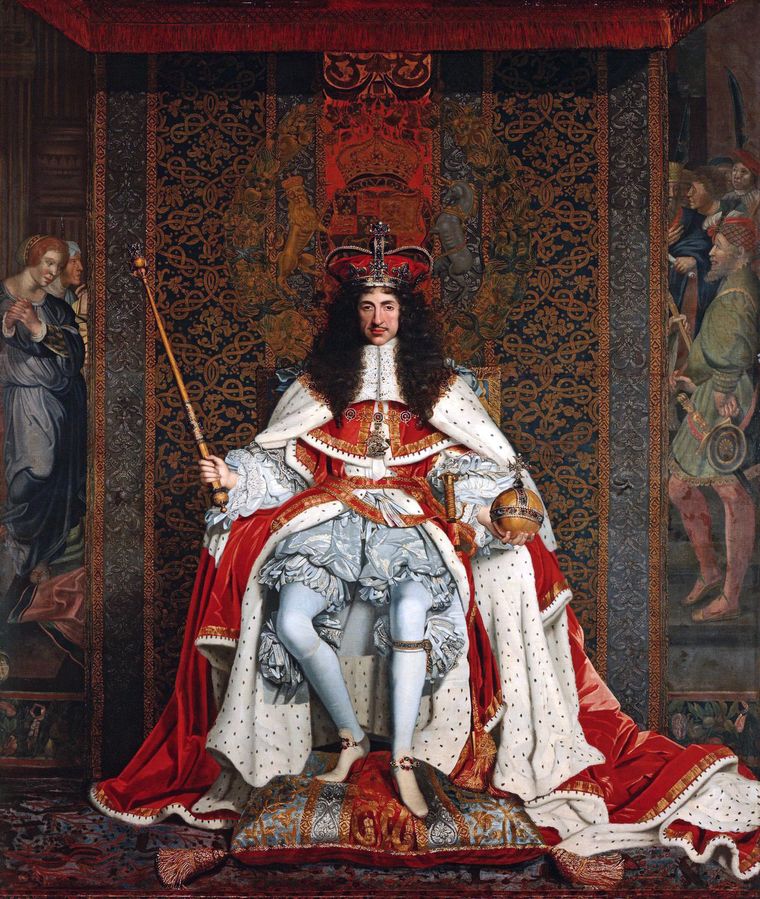MANY HAD EXPECTED Charles to adopt a new regnal name on his coronation, just as his stuttering grandfather Albert of The King’s Speech fame had taken the name George VI. For, no English king has borne the name Charles after a Charles was executed in 1649 and his son, another Charles, presided over a lecherous reign marked by national calamities. Thus, the new king, by retaining his given name, is making a bold statement to his subjects―that he won’t be cowered by the ghosts of England’s past.
First about names. The British have Burke’s Peerage, but they have no Maneka Gandhi with a Book of Baby Names. When it comes to naming babies, the English royals have had few choices. Since the Norman conquest of 1066, England has had about 40 kings, but just about a dozen names to give them. Thus, they have had eight Henrys and Edwards, six Georges, four Williams, three Richards, two Jameses, and two Charleses ruling them. Indeed they have had one-off names here and there―like a Philip, a Stephen, and, of course, a John.
The name John has been avoided since the early 13th century, after their only John brought ignominy to the crown. He went back on the promises of liberty he had made in Magna Carta, and brought about England’s first political strife, known in history as the Barons’ War. He paid the price for his sins―he drowned to death while fleeing with his loot.
The names James and Charles had been shunned since the tumultuous 17th century. Never did the English people suffer as much as they did when two Jameses and two Charleses reigned over them one after the other with a short, but equally disastrous, republican spell. In those 85 years England had its only tyranny of 11 years, a decade-long civil war, a purge of parliament, the only public trial of a king, the only judicial beheading of a king, the only experiment with republicanism which was no better than a Christian Taliban rule, the restoration of monarchy, the great plague, the great fire of London, ill fame around the palace as a virtual whorehouse, religious persecution, arrest and trial of bishops, and finally the flight of a king in fear of his people.
Never before or never again did they have a Charles or a James.
Though both had been English Christian names earlier and still are, the two names came to the English royalty as imports from Scotland. When the illustrious Elizabeth died reputedly a virgin, they imported the first James, her second cousin, from Scotland. The two crowns were thus conjoined in 1603 under James I who had been Scotland’s James VI. Two centuries later the parliaments, too, would.
The Scotsman’s unfamiliarity with the English parliament’s powers caused problems, but he managed with his peaceful demeanour and scholarly conduct, even surviving the Gunpowder Plot of Catholic zealots to blow him up and the parliament. He put them to death, followed a careful religious policy in the Protestant-majority country, wrote the world’s first known thesis on the ill-effects of tobacco, claimed divine right for the king to rule, and commissioned a translation of the Bible into English which is still celebrated as the King James Bible or Authorised Version. Young journalism trainees even today are told to read the James Bible for brevity of expression. The shortest sentence in English literature is said to be contained in it―“Jesus wept” (John 11:35); in Wimbledon and other tennis courts the phrase refers to women players’ skirts―as short as possible.
James’s son Charles took the divine right theory to the extreme. For eleven years he tyrannised England without calling the parliament, whose consent was needed for imposing taxes. And when it was summoned, he marched into it with his guards seeking to arrest his critics. When parliament continued to defy him, he raised an army and prepared for war.
To cut a long story short, the parliament, too, raised its own army, defeated him in battle and took him prisoner. Then they tried the king of England for waging war on the crown of England (what a splendid logic of law that distinguished the person of the king from the state!), found him guilty and executed him, the only instance of a king being judicially executed in England. His son, the future Charles II, fled to Europe, leaving England to a republican experiment under Lord Protector Oliver Cromwell.
The protectorate banned even music and dance, and soon the people began longing for monarchy. The death of Cromwell, and the misrule by his son paved the way for the restoration of monarchy under Charles II.
The new king followed a careful religious policy of pandering to the Protestant majority who were suspicious of his Catholic sympathies. Anyway, he soon gained a reputation as the ‘Merry Monarch’, filling the palace rooms with his concubines. One of them, Nell Gwyn, was reported to have cried out when a Protestant mob, mistaking her for the Catholic Duchess of Portsmouth, mobbed her coach at the gates of the palace when she was riding out in the morning after a merry night with the king, “Pray, good people, be civil; I am the Protestant whore.”
Calamities visited the kingdom under Charles II’s reign. The great plague of 1665 killed a recorded 68,596 Londoners (the actual number could be more than 100,000), and many more in the rest of the country. The very next year came the great fire of London that gutted most of the prosperous merchant houses of the city.
When Charles died without a progeny, his Catholic brother James II succeeded him. James’s absolutism and pro-Catholic acts further angered parliament, alienated the people, and provoked the Church of England. The last straw was perhaps the arrest of seven bishops, on the king’s orders, on the charge of seditious libel. The court acquitted them, further undermining the credibility and authority of the king. Meanwhile, the birth of a son to the elderly king spread fears of a Catholic continuation on the throne, leading to the influential peers inviting James’s daughter Mary and her Protestant husband William of Orange, the monarch of Holland, to depose James. Before the ship carrying the daughter and son-in-law anchored at Torbay, James fled England. The event is remembered in history as the Glorious Revolution or Bloodless Revolution of 1688.
No other Catholic or Charles or James has sat on the English throne since.
All the same, there is said to have been a positive aside to the calamities that visited the last Charles’s reign. The great plague killed a large number of people, leading to a severe labour shortage, which in turn paved the way for mechanisation of production. The great fire that gutted London the following year is said to have also destroyed all the plague germs that could have been there in the subterranean hovels of the mediaeval city. Industrial production soon boomed, and the huge profits therefrom led to the rebuilding of a great city of topless towers, grand mansions, and smoke-spewing factories. Within a few decades, England was the leading industrial power in Europe, and soon in
the world.



